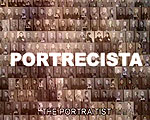Wilhelm Brasse facts for kids
Quick facts for kids
Wilhelm Brasse
|
|
|---|---|
| Born | 3 December 1917 |
| Died | 23 October 2012 (aged 94) Żywiec, Poland
|
| Nationality | Polish |
| Occupation | Photographer (1940–1945) |
| Known for | Photography done under duress as inmate of Auschwitz concentration camp |
Wilhelm Brasse (born December 3, 1917 – died October 23, 2012) was a Polish photographer. He became a prisoner in the Auschwitz concentration camp during World War II. He is known as the "famous photographer of Auschwitz."
His amazing life and work were shown in a 2005 Polish TV film. This documentary was called The Portraitist (Portrecista). It first aired on Polish TVP1 on January 1, 2006.
Contents
Wilhelm Brasse: A Photographer's Story
Early Life and Becoming a Photographer
Wilhelm Brasse was born in Żywiec, a town in southern Poland. His father was a Polish soldier. Wilhelm learned photography at his aunt's studio in Katowice. He became a professional photographer.
In 1939, Germany invaded Poland. Brasse's hometown was taken over. The Schutzstaffel (SS), a Nazi organization, questioned him. He refused to promise loyalty to Adolf Hitler. Because of this, he was put in prison for three months.
After he was released, he still refused to join the German Army. He tried to escape to Hungary. He wanted to join the Polish Army in France. But he was caught at the Polish-Hungarian border. He was then sent to Auschwitz concentration camp. He became prisoner number 3444.
Life in Auschwitz: Taking Pictures Under Duress
In Auschwitz, Brasse was forced to work in the camp's photo unit. This unit was called the Auschwitz Erkennungsdienst. His job was to photograph events in the camp. He also took pictures for prisoners' files. He even had to photograph some medical experiments.
Brasse believed he took between 40,000 and 50,000 "identity pictures." These photos were taken from 1940 until 1945. He was then moved to another camp in Austria. American forces freed him in May 1945.
Many of Brasse's photographs did not survive the war. But some are now shown in the Auschwitz-Birkenau State Museum. Others are at Yad Vashem in Israel. Yad Vashem is a memorial to the Jewish victims of The Holocaust.
The Importance of His Photographs
Brasse was ordered by his SS bosses to photograph prisoners' work. He also took pictures of medical experiments. And he took portraits of prisoners for their files. He estimated he took tens of thousands of these "identity pictures."
Josef Mengele, a Nazi doctor, liked Brasse's photos. Mengele wanted him to photograph people he was experimenting on. These included twins and people with certain health conditions.
Brasse was told to take prisoner portraits in three poses. These were from the front and from each side. Later, the Nazis ordered these photos to be destroyed. But Brasse and others disobeyed. This is why some of his photos still exist today.
It is hard to know exactly which photos were Brasse's. Camp photos usually did not have the photographer's name. About 40,000 of these pictures are saved. Some have identification cards. Around 2,000 are on display in the museum. Others are at Yad Vashem.
After the War: A New Beginning
After the war, Brasse returned home to Żywiec. This town was only a few miles from Auschwitz. He tried to start taking pictures again. But he found himself haunted by the people he had photographed in Auschwitz. He could not continue his work as a portrait photographer.
He stopped taking photos. Instead, he started a business selling sausage casings. This business became quite successful.
He later visited the State Museum at Auschwitz-Birkenau. He talked with visitors about his experiences. He still had a small camera from before the war. But he never took another photograph after Auschwitz.
His Legacy: The Documentary Film
A 52-minute Polish film was made about his life and work. It is called The Portraitist (Portrecista). Irek Dobrowolski directed it. It was first shown on Polish TVP1 in 2006.
In the film, Brasse shares the stories behind some of the pictures. These are photos from the Auschwitz museum archives that he remembered taking. The film highlights that after taking thousands of photos of terrible cruelty, Brasse could no longer continue his profession. He took these pictures for future generations to see.
More About Wilhelm Brasse
- Auschwitz: Inside the Nazi State (BBC and PBS, 2005), episodes 1 and 2.
- The Portraitist (Polish: Portrecista, TVP1, 2005).
See also
- Czesława Kwoka
- The Holocaust
- The Portraitist


